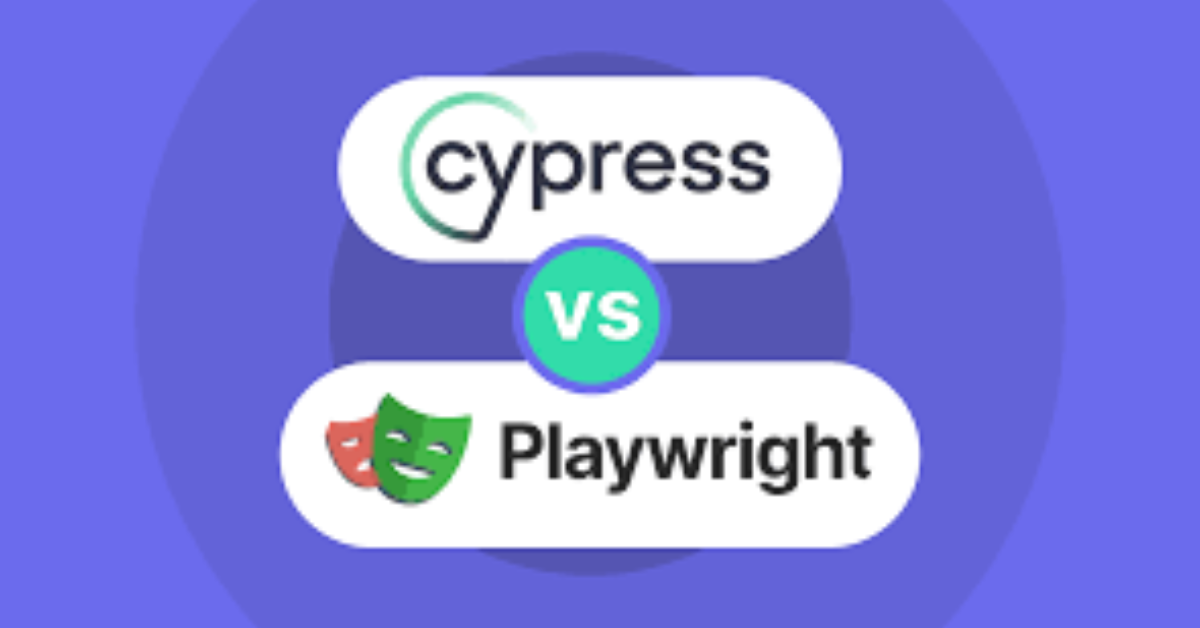Playwright vs Cypress: Comparing Debugging, Cross-Browser Support, and Mobile Testing
In the fast-paced world of web development, we know that user experience is key and that consistency across devices and browsers must always be maintained. End-to-end (E2E) testing frameworks have become staples in web development. With Playwright and Cypress emerging as the most utilized frameworks, teams are looking for more efficient deployment cycles and higher quality code. Choosing the best testing framework is key to this. So, testers have come to debate: Playwright vs Cypress: which framework is better suited for debugging, cross-browser, and mobile testing?
In this article, we deep dive into Playwright and Cypress from a practical point of view, focusing on three important aspects of testing: debugging ability, cross-browser testing support, and mobile testing capability. For teams working with responsive web apps or teams that are working through complex UI scenarios, understanding the real-world comparisons between these two frameworks can help make decisions on which one fits best. Let’s take a look at how each tool can be measured and which could be a good fit for their testing practicality.
An Overview of Playwright
Playwright is an open-source end-to-end testing framework made by Microsoft that automates modern web applications across different browsers, with a single API. It enables testing in Chromium (for example: Chrome, Edge), Firefox, and WebKit (for example: Safari), which means that testers can perform true cross-browser testing, a huge benefit for teams with a larger number of browsers and devices to support.
One of Playwright’s greatest strengths is its support for multiple languages: JavaScript, TypeScript, Python, C#, and Java, which makes it friendly for a wider breadth of developers. It supports headless and headed executions, fine-tuned control of browser contexts, and auto-waiting for UI elements, reducing flaky testing due to timing issues.
The playwright shines in automation precision. It enables developers to simulate real user scenarios with comprehensive keyboard, mouse, touch events, and network conditions API’s. Particularly for testing modern web applications, the framework supports testing parallel execution as well as multi-tab/multi-page testing.
The framework is designed with modern app frameworks, like SPAs (Single Page Applications), in mind, allowing testers to automate browsers with great precision and control, making it a strong option for QA teams and developers looking for fast, scalable testing capabilities.
An Overview of Cypress
Cypress is a popular open-source end-to-end testing framework specifically for modern web applications. Unlike older testing frameworks with a process that runs outside the browser, Cypress is in the browser, so it can interact with the DOM in real-time and offer a developer-focused/testing experience.
Designed for front-end developers, it is completely in JavaScript and is very closely coupled to the browser environment. This way it enables fast test execution, automatic refresh in real-time, debugging capabilities, and automatic screenshots of tests. It also has time travel features using the testing steps, access to the browser developer tool while the test runs, and many more.
Cypress is known for its simplicity and ease of setup. It doesn’t need special drivers or complex setups before testers can write and run tests. Its interactive Test Runner UI gives visual access to running tests while seeing them run, inspecting elements, and debugging failed tests right away.
Cypress is excellent for writing fast, readable, and maintainable tests, making it perfect for any developer who values productivity, quick feedback, and seamless integration into their development workflow.
Comparison of Debugging Capabilities in Playwright and Cypress
Debugging effectively is important when addressing test failures and also for keeping dependable automation suites. Playwright and Cypress provide support for debugging, but their methods differ and may suit different workflows and style preferences.
Visual Debugging Tools
Playwright: It offers a Playwright inspector, a visual tool where testers can step through test execution, highlight selectors, and interact with elements. It also includes a Trace Viewer, which visually shows each action, its context, and browser state, ideal for analyzing failures post-execution.
Cypress: It features an interactive Test Runner UI that displays test steps in real time. Each step is visually represented, and testers can hover over commands to see the DOM snapshot at that moment (time-travel debugging), providing a highly intuitive debugging experience.
Command logging and Output
Playwright: Output detailed logs in the terminal and trace viewer. The logs include actions, console messages, and errors. Developers can also programmatically log custom messages and capture console output from the browser.
Cypress: It has a rich command log in the Test Runner, which logs every Cypress command, assertion, and event. This live feedback helps quickly pinpoint where a test is failing and why.
Screenshots and Video Capture
Playwright: It supports systematic screenshot and video capture on test failure. Testers can configure it to capture screenshots at each step or only upon failure, which is useful in Continuous Integration environments.
Cypress: It automatically takes screenshots on failure and offers video recordings of test runs when integrated with CI. The media is linked directly to test steps in the Cypress Dashboard for easy review.
Comparing Cross-Browser Compatibility in Playwright and Cypress
Cross-browser testing is a critical part of any end-to-end testing framework, which will guarantee some consistency across browsers. Both Playwright and Cypress support multi-browser capabilities, but their support models and limitations are quite different.
Browser Support
Playwright: It supports three of the major browser engines: Chromium, Firefox, and WebKit through one unified API. So the testers can test in Chrome, Edge, Firefox, and Safari via WebKit, which in turn will get us the complete cross-platform coverage on macOS and mobile.
Cypress: Cypress is primarily supported on Chromium browsers, Chrome, Edge, and Firefox, in experimental mode. It does not support WebKit or Safari, which means there is no way to test for rendering issues, iOS, or Safari-specific.
Execution Modes
Playwright: Tests can be handled in headless mode for any supported browser, giving flexibility in local development and Continuous Integration pipelines. Playwright also allows multiple contexts (browser tabs/windows) and parallel browser sessions.
Cypress: Cypress runs in a real browser instance, but each test opens in a single tab, and multi-tab or multi-origin support is limited. It supports both headed and headless modes, but less flexibly compared to Playwright.
Browser Engine Coverage
Playwright: With WebKit support, Playwright enables testing for Safari on macOS and iOS, even in Continuous Integration. This is a major advantage for teams that must validate cross-platform compatibility.
Cypress: Due to its lack of WebKit support, Cypress is not suitable for Safari or iOS testing. This can be a deal-breaker for teams needing full device/browser matrix testing.
Comparison of Mobile Testing Support in Playwright and Cypress
As mobile usage continues to dominate web traffic, testing frameworks must be able to effectively simulate and validate mobile experiences. Here’s how Playwright and Cypress help in terms of mobile testing support:
Device Emulation
Playwright: It supports built-in device emulation through the Playwright devices API. It can replicate those well-known devices like the iPhone, the Pixels, Galaxy, etc., by simulating screen size, device scale factor, user agent, and touch features to render and interact on different types of devices.
Cypress: Cypress lacks true device emulation. It only supports viewport resizing, which changes the screen dimensions but does not alter user agent, touch events, or pixel density. It provides a superficial simulation of mobile views, not a full emulation.
Touch and Gestures Support
Playwright: It gives developers touch event simulation, so they can actually test tap, swipe, and multi-touch gestures correctly. Touch event simulation is very important for testing mobile interactions like sliders, carousels, and mobile menus.
Cypress: Cypress does not support native touch events. Mobile interactions are simulated through mouse events, which may not accurately replicate real touch behavior, a limitation for gesture-heavy interfaces.
WebKit and Safari (iOS) Testing
Playwright: Playwright supports WebKit natively, allowing testers to run tests that accurately represent Safari’s rendering engine behavior on iOS. This means, in addition, testers will be able to test all of the iOS-specific layout, interactions, and rendering bugs (with the proper layouts) in a CI environment.
Cypress: Cypress does not support WebKit or Safari, so it is not a good solution for testing developers’ apps in an iOS-like environment. This limits its usefulness for teams that need full device and browser coverage.
Which one to choose: Playwright or Cypress
Both Playwright and Cypress are current, developed in JavaScript, and open source, but they differ in design philosophy, capabilities, and ideal use cases. Playwright was created by Microsoft to enable reliable cross-browser automation. It enables testing in Chromium and Chrome, Firefox, and WebKit. Also, it simulates mobile browsers. In contrast, Cypress is known for having a developer-oriented experience with the ability to reload the application in real-time with a robust debugging environment, however, it lacks coverage for some browsers, especially mobile.
While choosing among these frameworks, developers must make decisions based on their project’s requirements. They can choose Playwright if they need comprehensive browser coverage, mobile simulation, and are testing across multiple platforms. If they value ease of setup, fast local debugging, and are focused on a Chrome-based workflow, then Cypress is the best choice.
Regardless of their choice, it is recommended to choose a cloud testing platform like LambdaTest that enriches and provides value to either Playwright or Cypress capabilities, providing a future-ready solution for reliable, scalable, and efficient test automation.
LambdaTest is an AI-native test orchestration and execution platform to run manual and automated testing in the cloud at scale. The platform enables scaling testing, runs automated testing in real-time by gaining access to more than 3000 environments and real mobile devices, providing powerful insights, and ensuring that the application is production-ready in any environment.
Playwright offers robust features like multi-browser support (including WebKit for Safari) and advanced debugging with its Inspector and Trace Viewer. Cypress, on the other hand, shines with its interactive Test Runner and intuitive time-travel debugging. By leveraging LambdaTest, both resources get cloud execution, complete logs, screenshots, and video history so testers can debug faster and more accurately across environments.
Among various automation testing tools LambdaTest platform becomes even more powerful through its scalable, CI-friendly environment. For cross-browser testing, Cypress is limited in browser scope, while Playwright’s inbuilt support for Chromium, Firefox, and WebKit is truly valuable. Combining them with LambdaTest extends its reach to more browsers, operating system combinations, and real devices, ensuring accurate testing across actual iOS and Android devices and environments.
Conclusion
In conclusion, comparing Playwright vs. Cypress in debugging, cross-browser support, and mobile testing capabilities, both of them provide rich features for modern testing automation workflows.
While Playwright offers broader cross-browser and cross-platform support (including WebKit (Safari) and Firefox), mobile emulation, trace debugging, and scaling in CI environments, Playwright will be the best choice for complex apps and enterprise-level testing. Cypress will provide a better experience, laying on top of a rich, fast, developer experience for local development, Chrome-based frontend testing, with an intuitive UI, live reloading, and seamless debugging.
However, both tools have limitations when it comes to real devices and extensive browser coverage. Using a cloud platform like LambdaTest adds immense value. By integrating Playwright or Cypress with LambdaTest, teams can access thousands of real browsers and devices, run tests in parallel, and get advanced debugging insights, all within CI/CD pipelines.







